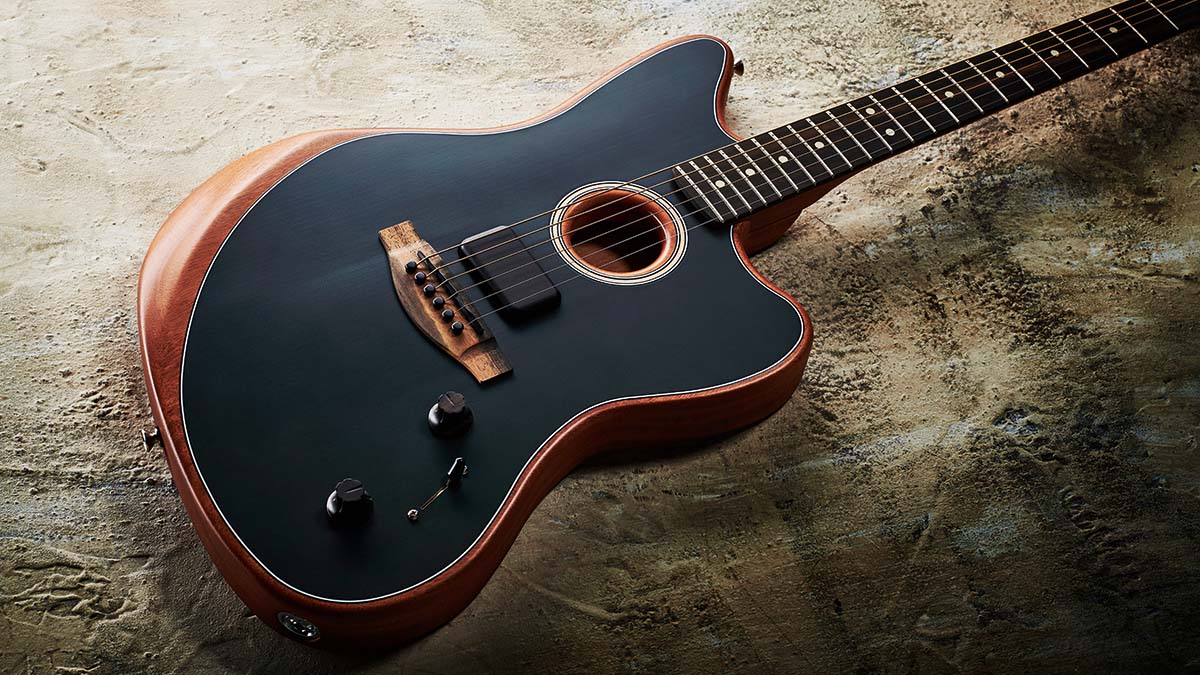Guitar World Verdict
The Acoustasonic is once more validated by the sheer breadth and quality of the acoustic sounds and electric voices on offer. This is a true hybrid acoustic-electric guitar that blurs the lines in the most musically inspiring ways.
Pros
- +
Expanded body size.
- +
‘Bigger’ voices and new humbucker might make this the best Acoustasonic yet.
Cons
- -
The Jazzmaster shape might be too big for some.
- -
For many, the Acoustasonic concept is just too new!
You can trust Guitar World
If you’ve missed our coverage so far of the American Acoustasonic Tele and Strat, we’ll recap here as this new Jazzmaster version is very much a sibling. The Acoustasonic might use the shape of those classic solidbodies, but it is an acoustic guitar first and foremost.
It’s also a Fender, so all three guitars are bolt-ons and have the Micro-Tilt adjustment (albeit it with four screws to secure the neck, rather than the two-screws-plus-bolt of the original 70s design), which is essential for setup when you have a non-adjustable acoustic-style pin bridge.
Although the guitars still employ the standard Fender acoustic guitar scale length, the necks themselves break with tradition: mahogany, quarter-sawn for maximum stiffness, with a 22-fret ebony ’board and a flatter 305mm (12-inch) Gibson-like radius. The mainstream neck shape is the same across all three, a modern deep C like Fender’s American Professional II.
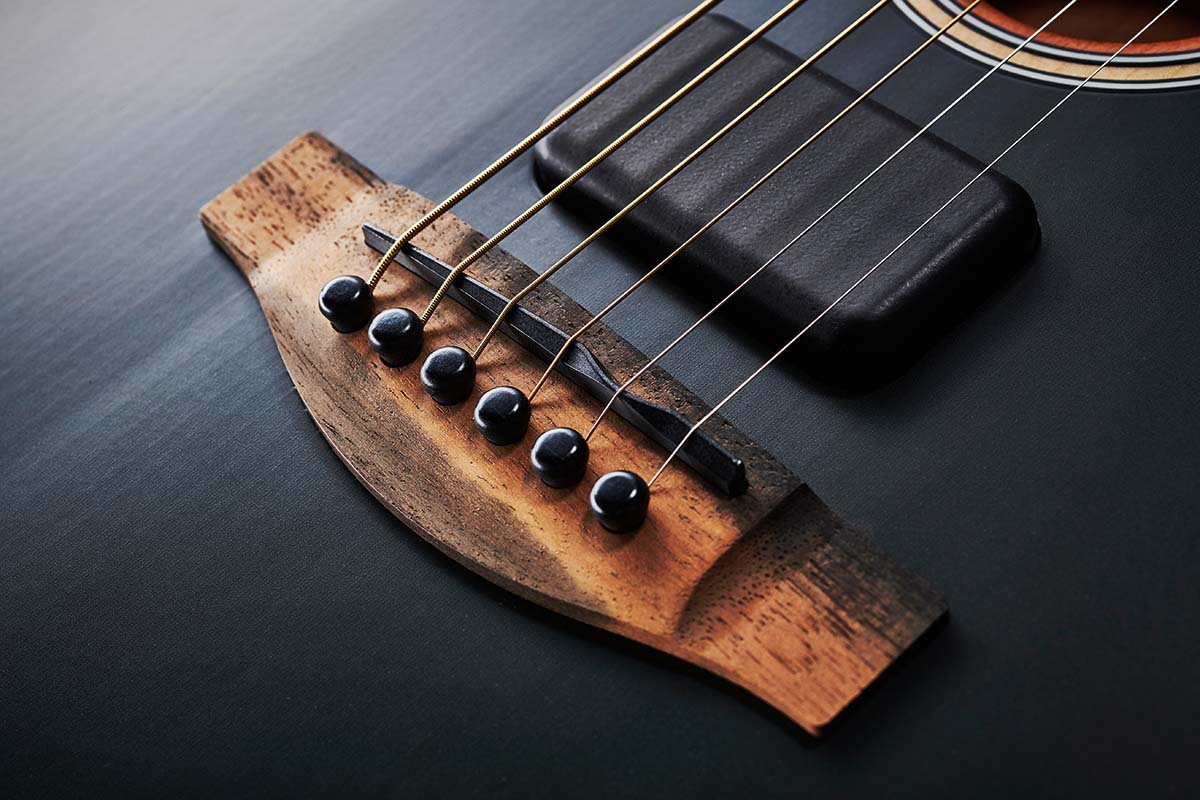
The body shells are again mahogany. Our Jazzmaster’s is two-piece, finely centre-joined, with the grain of the two pieces diagonally matched. The thin (approximately 3mm) inset spruce top here is hidden under the deep grey Tungsten finish, one of five offered, which is edged with what looks like black/white/black purfling.
However, this entire top finish is a printed paint process including those stripes, which are not inlaid; it’s the same with the rings around the small soundhole. Despite the mainly hollow build, we still have a forearm and ribcage contour, although both are less extreme than you’d see on a 50s solidbody.
Colour of the top aside, the guitar is natural finished – it feels almost unfinished like an oil process, and if anything the neck back, not to mention that forearm contour, feels more burnished than the two previous models we’ve played. Like any light satin finish, you can expect it to gloss up the more you play it.
That small sound hole – or, more accurately, sound port aka ‘doughnut’ – not only gives the Acoustasonic a very different appearance to any other mainstream electro-acoustic guitar we’re aware off but actually tunes the acoustic response of the guitar: the start point of the design.
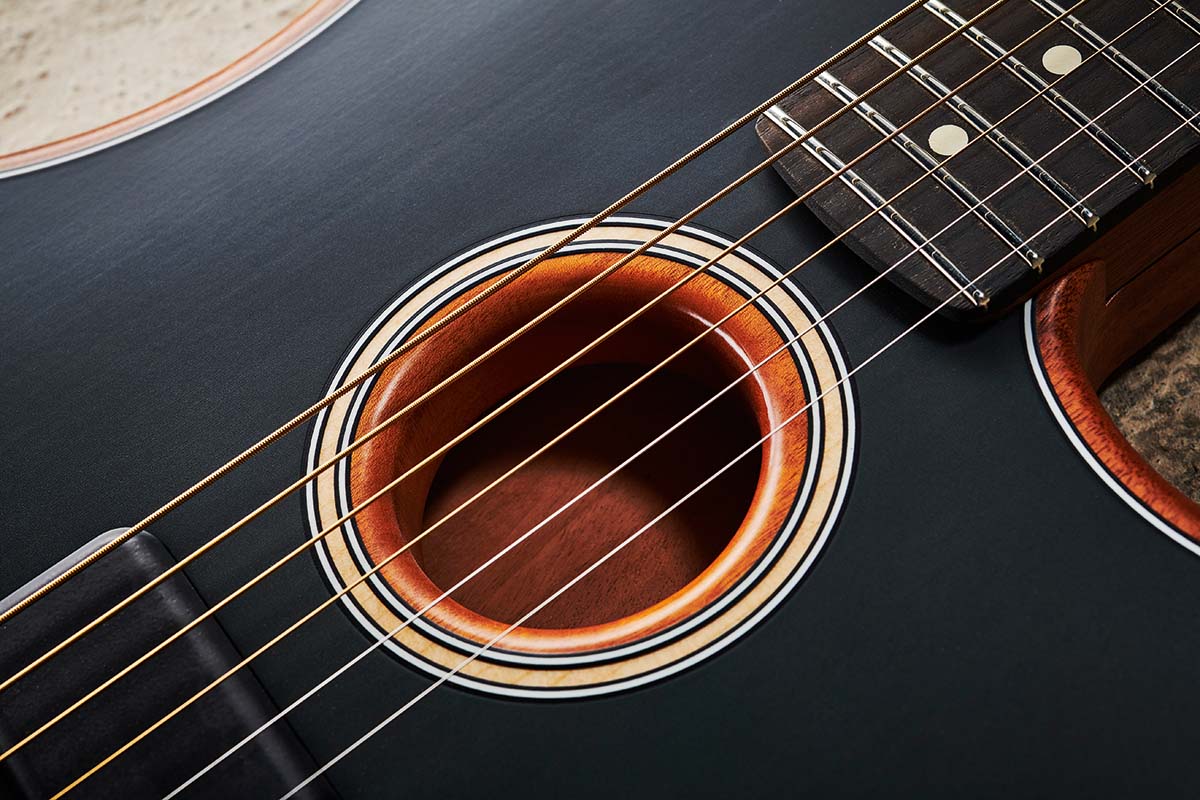
It means that, despite its solidbody size and depth (45mm), there’s surprising volume unplugged, although the low-end is obviously a lot trimmer than even quite a small-bodied, thin-depth conventional acoustic. So, while the Acoustasonic is a rather good ‘quiet’ acoustic for home use, that’s just scratching the surface of what’s on offer here.
Is this Jazzmaster version the same as we’ve heard before, then? Yes and no. To backtrack, the guitars use a trio of pickups: an under-saddle transducer, a top sensor and a magnetic pickup. These three pickups are voiced in a stupidly simple manner via a five-way lever switch renamed for this platform as the Voice Selector.
In each of its five positions two sounds can be accessed at the extremes of the lower rotary control – originally called the Mod knob and now also known as the Blend. So, fully anticlockwise we have sound A, fully clockwise we have sound B, and as you move between those points the two sounds are morphed together in a totally unique fashion.
This creative all-in-one musical tool completely blurs the lines between acoustic and electric
Position 5 – what us Strat players think of as the neck pickup position – is where we start with the acoustic sounds, and it all becomes more electric as we move to position 1, which voices the magnetic electric sounds with a little bit of crunch. Here, for the first time, we have a full-size humbucker as opposed to the single-coilsized Noiseless humbuckers of the Tele and Strat versions.
The onboard electronics to make all of this possible do need powering, but that’s done very discreetly via a USB charge lead that plugs into the output jack plate. There’s a small LED charge indicator that lights when you plug in: green, you’re fully charged; blinking red you have about an hour’s play time left.
Feel & Sounds
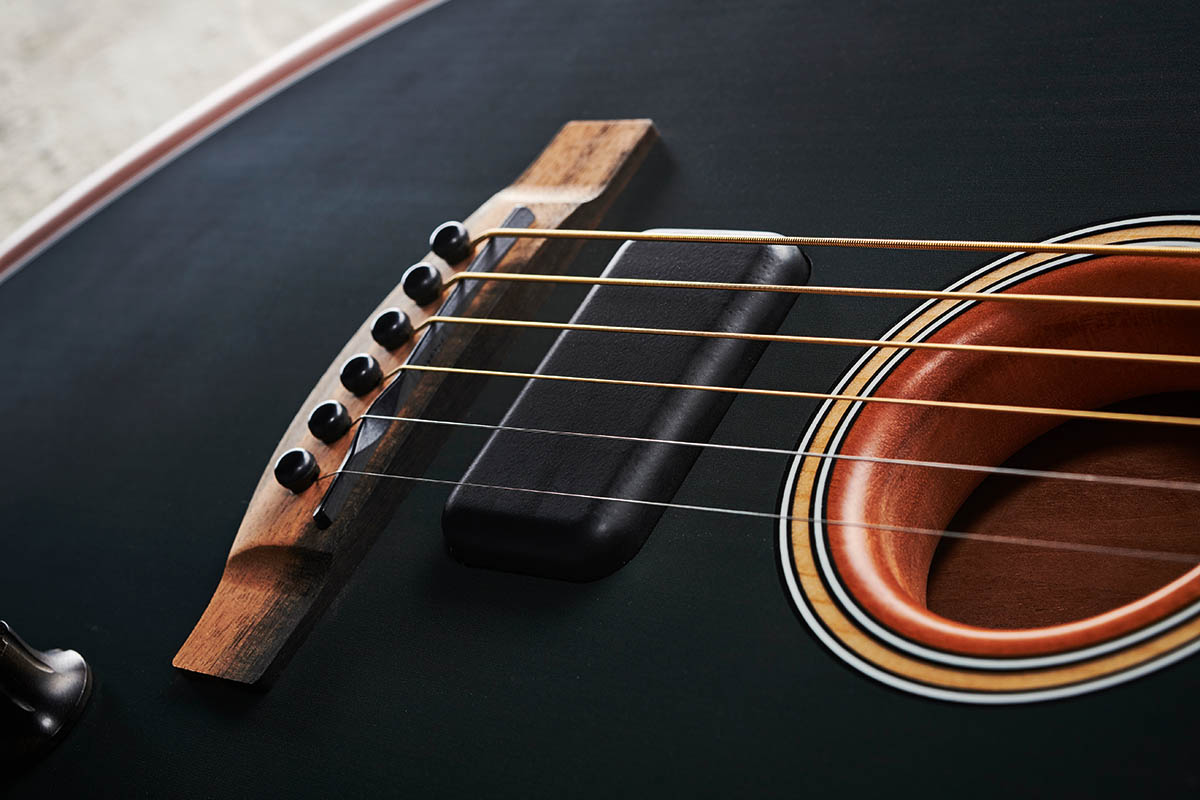
While it’s the position 2 and 1 sounds that are new here, as Tim Shaw explains the other sounds that do feature on the Tele and Strat are enhanced by the bigger top area and body, which we’re told “sends more acoustic information to the processor to create the warmest and most natural tone Fender have ever offered”.
Now, unlike some ‘hybrid’ guitars (PRS’s Hollowbody Piezo, for example), we only have a single mono output, which means you can’t voice ‘acoustic’ and ‘electric’ sounds simultaneously. And, as Fender demonstrates, positions 3 to 5 ideally need to be treated as you would your Martin or Taylor electro-acoustic through an acoustic amp or PA.
Position 1 should go into your electric amp, and Position 2, the Lo-Fi piezo sound, probably should be voiced into that electro-acoustic setting, but the same sound with some crunch could be either. The beauty of the design, though, is that you can do what you want – and Fender encourages you to do just that.
We’re drawn to position 3 with a little of the body sensor ‘tap’ pickup brought in – it certainly suggests you’re playing a bigger-sounding instrument than you are
Before we start breaking the rules, however, we listen to the sounds via the above destinations. And then get completely lost. If there’s a slightly plinky response from the acoustic voice it disappears coming out of our AER. Frankly, this writer would be happy with anything from positions 5 to 3. We’re drawn to position 3 with a little of the body sensor ‘tap’ pickup brought in – it certainly suggests you’re playing a bigger-sounding instrument than you are.
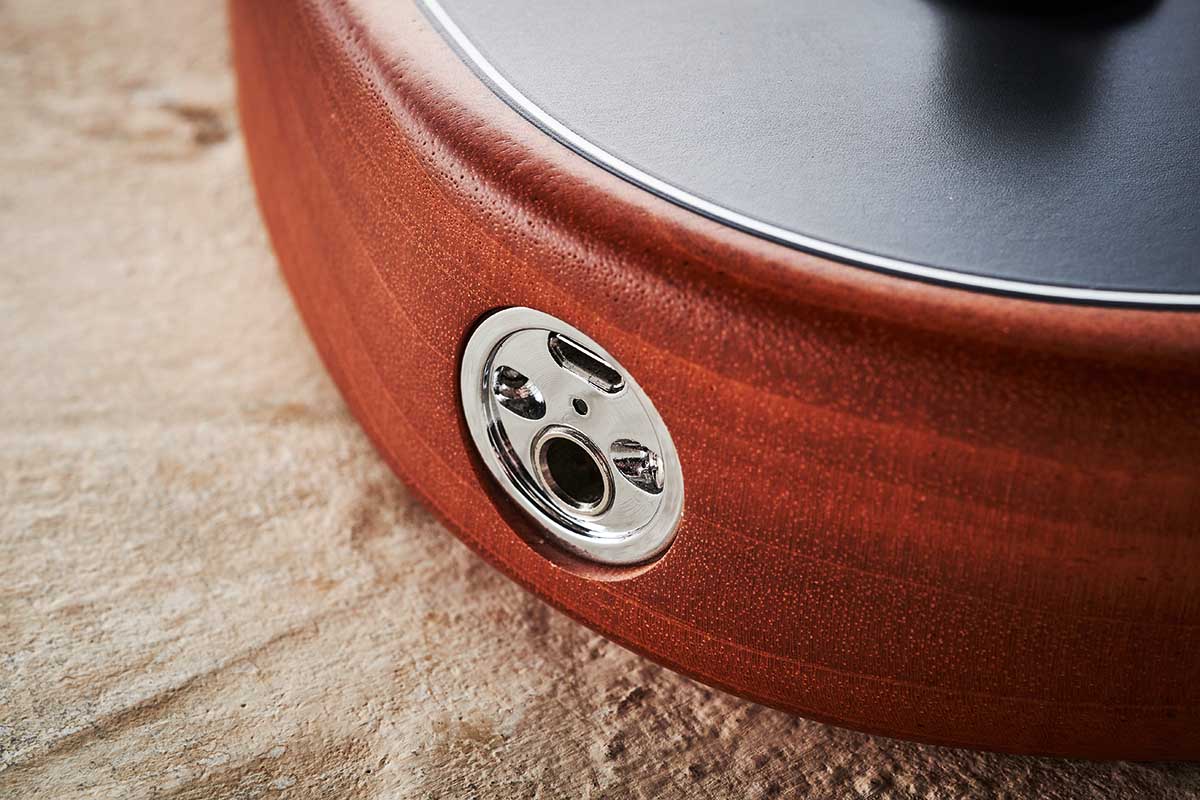
In use, things are so intuitive here that we’re thinking less about the described style of the sound than the sound itself, certainly when we’re recording. You might start on sound A on the Mod/Blend knob then slowly move across the range of the pot, which, on Position 5 for example, cleans up the bass end a little. In position 4, doing the same brings a little punch to the quite wide-sounding jumbo.
As we’ve said, the quality of the sounds is very good. Would you get a better sound from mic’ing a similarly priced acoustic? In theory, yes, but that assumes you’re set up to do that and have a quiet environment, good microphones and know how to use them.
The Acoustasonic is totally plug-in-and-go. The different voicings, while hardly chalk and cheese, are certainly distinct enough from each other; they sound like different guitars at just the flick of a switch. It’s very quick to track them while recording, too – just switch position and maybe change your chord inversion and after a couple of passes you have a huge-sounding acoustic bed.
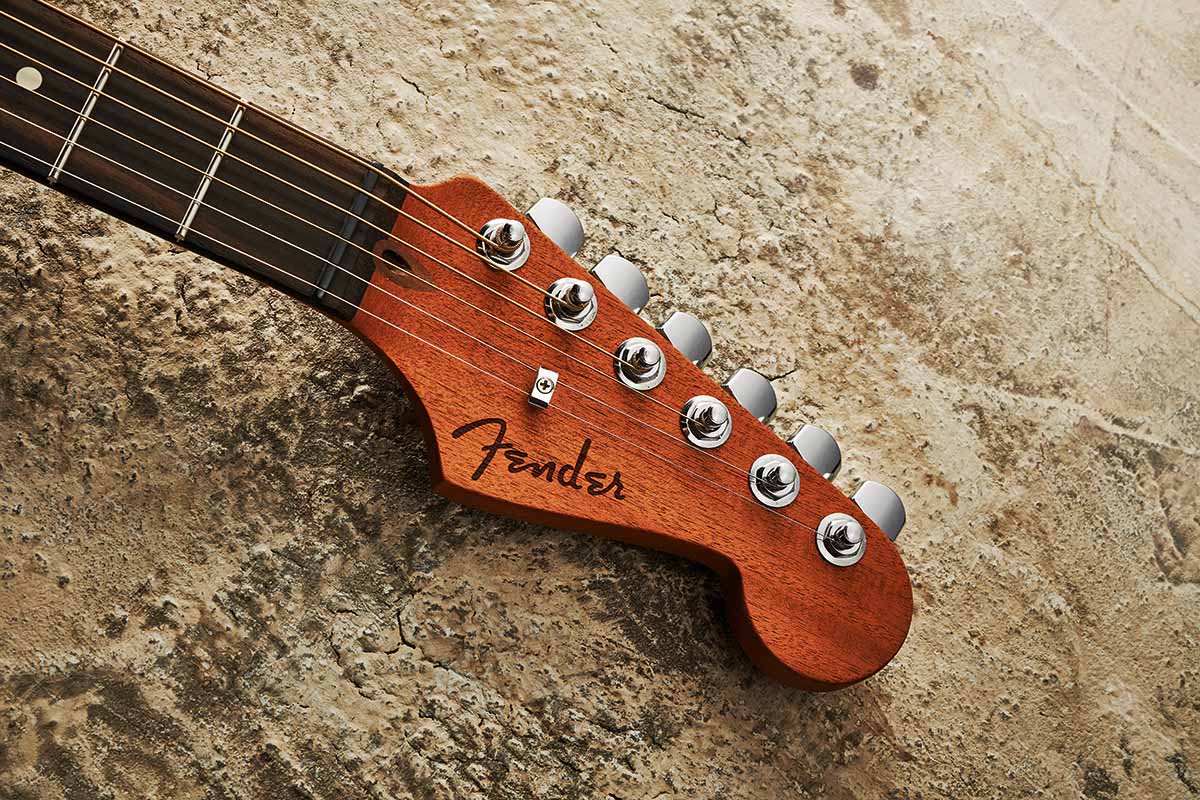
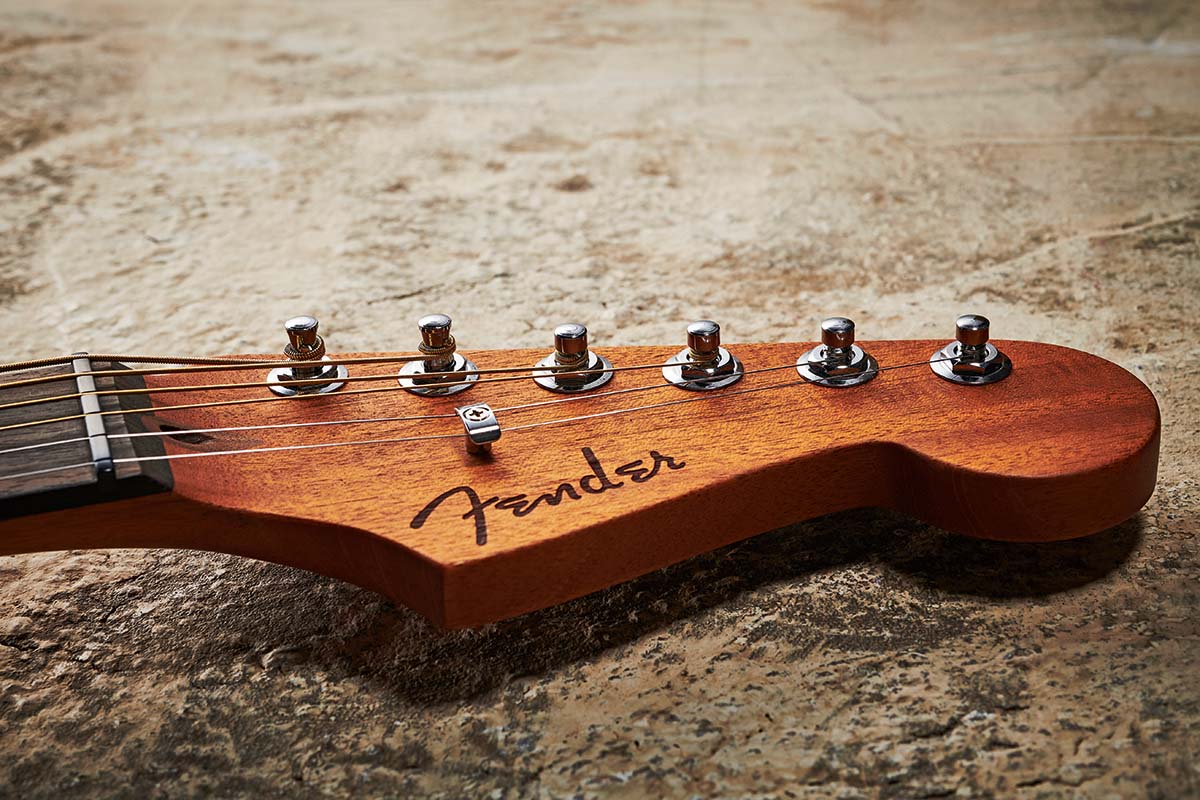
Moving to position 2 is where things begin to get a little different. The Lo-Fi piezo setting is the sort of electro-acoustic sound we’ve heard for years at gigs and on plenty of live recordings. It’s more electric, less detailed and a little strident, but not only is it familiar, it’s very useful from a recording perspective, especially when you need to add a little sheen, with less body than the more accurate acoustic voices.
The crunch is relatively subtle and actually reminds this writer of an old piezo with a slightly flat battery; it adds a little texture. Both these sounds really work with your pedalboard, too.
Finally, position 1 is the new humbucker, but it’s worth remembering that it’s a humbucker on an acoustic guitar, so running it through our AER, for example, or direct into our DAW, it’s quite steel guitar-like but still with a little acoustic-like texture and string noise if you’re not careful.
Again, moving from voice A to B simply increases the crunch, so you just tailor that to the part you’re playing – pull it back to clean up and vice versa. We have no idea if it was part of the design, but it’s a superb slide guitar sound, too: rootsy and biting with seemingly a little compression.
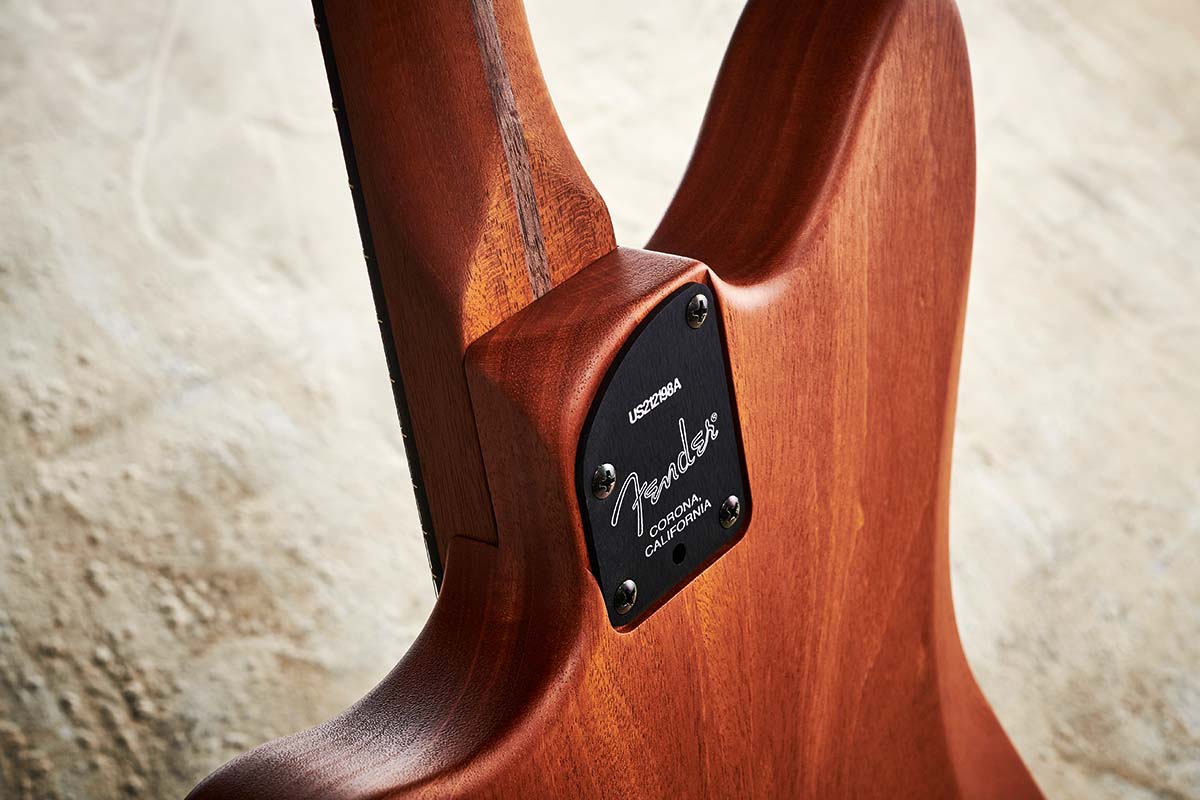
Now, run this guitar through an electric guitar amp and the fun really starts. Having gigged the Acoustasonic Telecaster in this mode, we’d suggest that things can get a little lively here. It’s still a pretty resonant platform, but when it’s used as a recording tool via our Line 6 Helix you can heap on gain, fuzz or both for your alt-rock or frankly fairly metal leanings.
Verdict
You can watch all the YouTube demoes in the world, but actually getting one of these in your hands and working with it proves – to us, at least – the immense validity of the Acoustasonic concept. Realistic acoustic sounds and credible electric voices are all easily accessed.
The actual guitar? That disappeared days ago: it’s completely fit-for-purpose, stable and in tune, even though we might be tempted to drop down a gauge on the string front. Played acoustically, no, it doesn’t capture the depth of the real thing, but it’s perfectly engaging for quiet songwriting and practice.
For us, it’s about the flexibility of the sounds on offer – as simple as that – and this Jazzmaster really stretches out. It’s one of the most creative all-in-one musical tools we’ve encountered and completely blurs the lines between acoustic and electric.
Specs
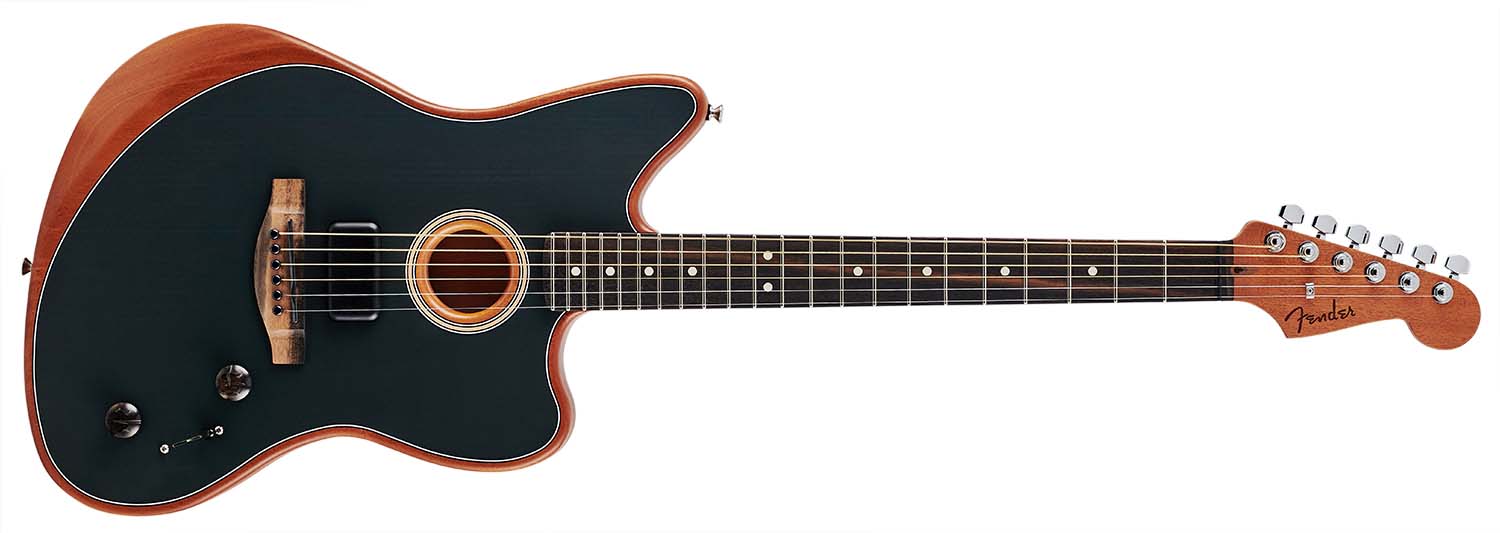
- PRICE: $1,999 / £1,879 (inc gigbag)
- ORIGIN: USA
- TYPE: Double-cutaway offset-style electro-acoustic
- BODY: Mahogany (hollow) with inset Sitka spruce top
- NECK: Mahogany, modern ‘deep C’ profile, bolt-on
- SCALE LENGTH: 648mm (25.5”)
- TUNERS: Fender standard cast/sealed staggered tuners
- NUT/WIDTH: Graph Tech Black Tusq/42.8mm
- FINGERBOARD: Ebony, white dot markers, 305mm (12”) radius
- FRETS: 22, narrow/tall
- BRIDGE/SPACING: Ebony w/compensated Black Tusq saddle/54mm
- ELECTRICS: 3-pickup configuration: Fishman under-saddle transducer and bridge plate body sensor Enhancer, Fender Acoustasonic Shawbucker humbucker. Master volume, Mod knob, 5-way Voice Selector lever switch. Single mono output with USB battery charge
- WEIGHT (kg/lb): 2.93/6.45
- OPTIONS: Colour only
- RANGE OPTIONS: The Acoustasonic Telecaster and Stratocaster both cost $1,999 / £1,779; the Ltd Edition Stratocaster is the same spec but with various exotic wood combinations at $3,299 / £2,999
- LEFT-HANDERS: Telecaster ($1,999 / £1,779)
- FINISHES: Tungsten (as reviewed), Ocean Turquoise, Natural, Tobacco Sunburst and Arctic White – satin matt polyester to body; satin urethane to neck and headstock
- CONTACT: Fender

Dave Burrluck is one of the world’s most experienced guitar journalists, who started writing back in the '80s for International Musician and Recording World, co-founded The Guitar Magazine and has been the Gear Reviews Editor of Guitarist magazine for the past two decades. Along the way, Dave has been the sole author of The PRS Guitar Book and The Player's Guide to Guitar Maintenance as well as contributing to numerous other books on the electric guitar. Dave is an active gigging and recording musician and still finds time to make, repair and mod guitars, not least for Guitarist’s The Mod Squad.
“While the odd corner has clearly been cut, these are true Gibsons with all the individuality that this brand exhibits”: Gibson J-45 Special and Hummingbird Special review
“Fender has stripped back the price – but has it gone too far paring back the sounds, too?” Fender Standard Acoustasonic Telecaster review
